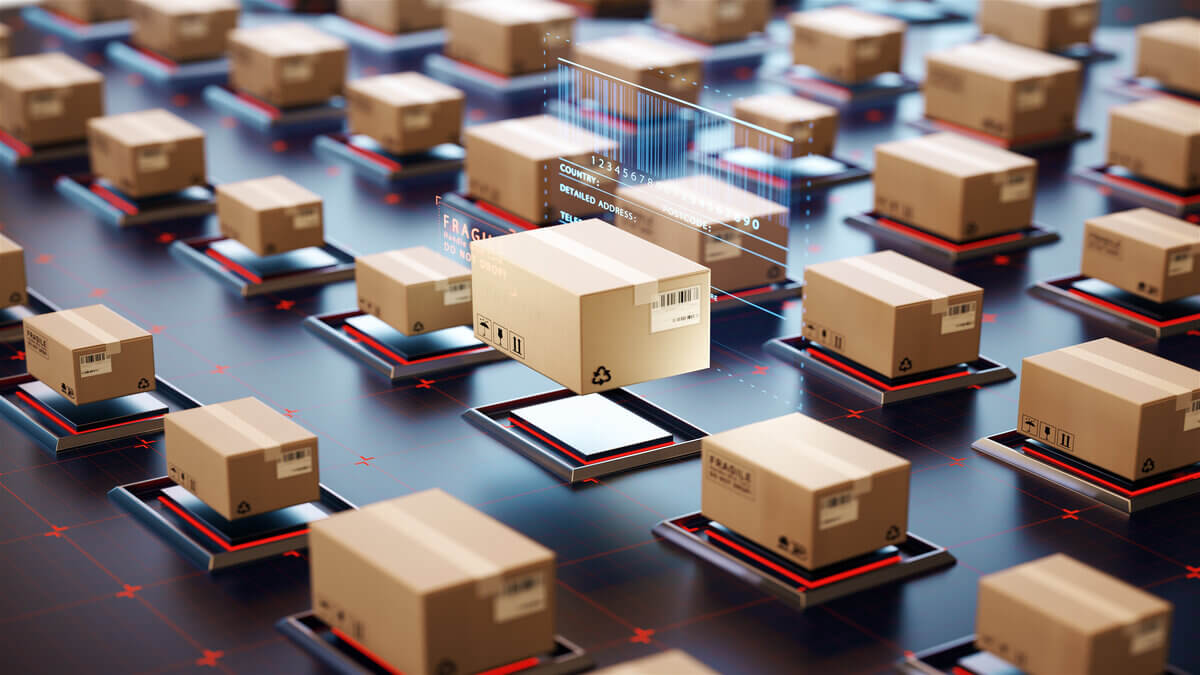Saving the Planet One Weld at a Time: How Sustainable Welding can Make a Difference

Saving the Planet One Weld at a Time: How Sustainable Welding can Make a Difference
Welding is a critical process in various industries, with millions of welders working around the globe. But did you know that inefficient welding practices and equipment can significantly impact the environment?
According to the International Energy Agency, the industrial sector, which includes welding, is responsible for a quarter of global emissions. In particular, the steel industry, which heavily relies on welding, is one of the world’s largest emitters of carbon dioxide, accounting for about 7% of global emissions.
As more and more investors and consumers prioritize Environmental, Social, and Governance (ESG) considerations when making an investment or purchasing decision, companies must reduce their environmental impact and adopt sustainable practices, including the welding industry.
How Could Your Welding Habits be Killing the Planet and Harming Workers?
The welding process generates a lot of heat and produces fumes and gasses that harm the environment. These fumes and gasses contain toxic compounds like carbon monoxide, nitrogen oxides, and ozone, which can contribute to air pollution and climate change. Using poor welding equipment can have severe consequences for the health and safety of workers too. Exposure to toxic fumes and gasses can cause respiratory problems, while accidents and injuries can lead to burns, electrocution, and eye damage.
Welding for the environment
Socially-conscious organizations are already taking steps to contribute to saving the planet by adopting environment-friendly welding processes. Some tips to consider are:
Use Energy-Efficient Welding Machines
One way to reduce energy consumption during the welding process is to use energy-efficient welding machines. These machines use less electricity, resulting in fewer emissions, making them a more sustainable choice.
Choose the Right Welding Process
Different welding processes have varying environmental impacts. Welders should choose the process that produces the least emissions for their specific job. For instance, gas metal arc welding generates fewer emissions than shielded metal arc welding.
Best Practices for Sustainable Welding
To promote sustainable metal-working practices, organizations should recycle metal scraps instead of throwing them away, which reduces the need for new metal production and minimizes the environmental impact. Welders should also prioritize proper disposal procedures for contaminated materials like welding rods and electrodes to prevent hazardous substances from harming the environment and human health.
Welding can have a significant impact on the environment, but there are products & practices you can adopt to minimize your carbon footprint. At Moglix, you will have access to the most comprehensive range of welding supplies from best in class brands, allowing you to balance budget, timelines and sustainability goals. Get in touch with us today.
Curious case of skilled welder shortage

Curious case of skilled welder shortage
India is facing a shortage of skilled welders, and it’s hindering the country’s progress towards a more sustainable future. Welding skills are crucial in a range of industries, including construction, manufacturing, and infrastructure development. However, the shortage of skilled welders is making it difficult for India to meet its ambitious sustainable development goals. According to the Indian Institute of Welding (IIW) in 2020, there was a shortfall of 1.2 million welding professionals, which was expected to increase to 1.35 million in the next three years.
There are several reasons behind the shortage of skilled welders in India. One of the main factors is the lack of vocational training programs. Many young people in India are not aware of the potential opportunities and benefits of pursuing careers in welding. The low status of skilled trades is also a contributing factor. Welding is often seen as a dirty and dangerous job, which has discouraged many young people from pursuing it as a career.
To address this shortage, India needs to invest in creating more training programs for aspiring welders. These programs need to be accessible and affordable to ensure that everyone who wants to pursue a career in welding has the opportunity to do so. Additionally, the government and private sector need to work together to promote the benefits of welding as a career, such as the potential for job security, high earning potential, and opportunities for career advancement.
Another potential solution is to incentivize young people to pursue careers in welding. This could involve offering scholarships, apprenticeships, or other forms of financial support to students who are interested in welding. By providing financial incentives, India can encourage more young people to pursue welding as a career, which can help to address the shortage of skilled welders.
Promoting the benefits of sustainable welding practices is also important. Sustainable welding practices can help to reduce waste, improve energy efficiency, and contribute to a more sustainable future. By promoting sustainable welding practices, India can create more interest in welding as a career, and attract more young people to the industry.
There are several successful initiatives that have been implemented in other countries to address similar skilled labor shortages. For example, in the United States, the National Center for Welding Education and Training (NCWEAT) has been working to promote welding as a career, and to provide training and education to aspiring welders. NCWEAT offers a range of programs, from short-term training courses to degree programs, to ensure that aspiring welders have access to the training and education they need to succeed in the industry.
In conclusion, India needs to take action to address its shortage of skilled welders. By investing in vocational training programs, promoting the benefits of welding as a career, incentivizing young people to pursue welding, and promoting sustainable welding practices, India can overcome its skilled welder shortage and build a more sustainable future. Welding skills are crucial to the success of a range of industries, and addressing the shortage of skilled welders is essential if India is to meet its ambitious sustainable development goals.
Pipe Dreams: How Industrial Piping can aid a circular economy

Pipe Dreams: How Industrial Piping can aid a circular economy
With sustainability and environmental awareness becoming hot topics in various industries today, the term ‘circular economy’ is becoming increasingly common. At its core, a circular economy is an economic system that aims to keep resources in use for as long as possible, extracting the maximum value from them while minimizing waste and pollution. Interestingly, there’s an unlikely but essential area to focus for commercial enterprises, while making the journey from a linear to a circular system — Industrial pipes.
Industrial pipes: A crucial piece of the puzzle in achieving circularity
Industrial piping is an indispensable part of modern infrastructure. Poor choice of industrial pipe materials could not only cost your business lakhs of rupees in extensive maintenance and repair but could also have severe and far-reaching environmental consequences.
Copper pipes, for instance, are particularly vulnerable to pinhole leaks arising from pitting corrosion. Debris can also be incredibly harmful in copper piping, resulting in uneven corrosion and causing some parts to decompose faster. Galvanized steel is a bit more rust-resistant, but piping in this category with threaded ends can be prone to leaks.
Water leakage from such industrial piping can cause the wastage of precious resources. And if the materials that leak into the surrounding environment are harmful industrial chemicals and gases, they could affect the immediate ecosystem severely.
Sustainability in different types of industrial pipes
Your business can avoid these grim prospects by choosing the right type of industrial pipes. Industrial pipes can also contribute to a circular economy in many ways. For example, pipes made from recycled plastic or metal can save on the use of virgin resources and reduce wastage.
Pipes made from durable and long-lasting materials can also be used longer, further extending the use of resources. They can also be efficiently processed at the end of their usable life, avoiding additional environmental harm. The bottom line is that the right kind of industrial pipes could pave the way for a circular economy by conserving resources, decreasing waste, and curbing pollution, all while efficiently facilitating the recycling and reuse of materials.
Choose sustainable industrial piping solutions today
Sustainability is the mantra driving the journey into the future, and industries today need to focus on choosing industrial pipe materials that check this box. Partnering with a comprehensive piping solutions partner like Moglix can make this much easier for your business. We help businesses in various industries find the right type of industrial pipes and pipe fittings for multiple applications from various brands without compromising the overall profitability of your venture. Know more
What is the Buzz Around Smart Packaging – Let’s Find Out

What is the Buzz Around Smart Packaging – Let’s Find Out
Conventional wisdom has it that packaging performs three functions: to preserve the value of a product during its shelf life, to promote the face of a product and finally to protect unit loads during transit in the supply chain journey. However, a new paradigm is emerging, wherein packaging shall perform a completely new function: it shall perform.
Smart packaging uses technology to optimize the packaging process. Grand View Research pegs the global smart packaging market at $26.7 billion by 2024, up from $10.8 billion back in 2015, with a compound annual growth rate (CAGR) of 10.6% from 2016 to 2024.
The reasons for this phenomenal growth are evolving customer lifestyle, rapid urbanization, and unprecedented technological growth that makes it possible for manufacturers to leverage content to add value to customers and enables the track and trace of unit loads all along the F2C, i.e. factory to customer supply chain journey.
What Are the Benefits of Smart Packaging?
Manufacturers have leveraged traditional packaging solutions to good effect to date. Therefore the emergence of smart packaging mandates an objective assessment of the additional value that it creates for manufacturers across diverse industry verticals by leveraging technology.
• Map End-User Trends – With smart packaging manufacturers can leverage the products to establish a stronger connection with customers through technology. This improves customer trust, which builds stronger brands. For instance, a sensor inserted into the packaging of the product can allow manufacturers to map the flow of the product through different stages in the distribution channel before it ultimately reaches the end-user. It makes enormous good sense to suggest that such technology integration into packaging can enable manufacturers to collect and map valuable data on user trends.
• A Better Degree of Sustainability – Smart packaging can allow users to support reusability and recycling initiatives in packaging. For instance, manufacturers that look to create a circular and closed-loop economy for reverse logistics of their packaging can track and trace the movement of used packaging materials, plan and optimize the logistics routes and identify waste collection points to create the paths for used packaging materials to return. This, in turn, can facilitate the reuse and recycling of packaging and thus reduce wastage; one of the single most important challenges facing manufacturers in the domain of industrial packaging.
• Streamlining the Supply Chain – Smart packaging can ensure lower wastage of the products. Measures like temperature sensing and anti-tampering if embedded into smart packaging can boost efficiencies in supply chain management. For instance, think of an FMCG enterprise that may look to use temperature-sensitive packaging for its product line of edible items with a short shelf life like curds and yogurts with a color scale to indicate the freshness of the product for consumption. It can reasonably simplify warehousing and downstream distribution and sales of inventories of such perishable goods on a first-in-first-out (FIFO) basis.
What Are the Types of Smart Packaging?
Depending on the two major dimensions of the functional value it delivers, smart packaging may be broadly classified into two categories as follows:
- Active Packaging: This type of smart packaging interacts with the contents of the package to help improve shelf life or its quality. An example is the sorbate-releasing LDPE (Low-Density Polyethylene) film that helps add anti-microbial activity to cheese packaging.
- Intelligent Packaging: This kind of smart packaging monitors and diagnoses the health of the package contents and communicates timely information to users. An example is Diageo’s tamper detection NFC chips. If any counterfeiter tries to open the product before it reaches the customer, then the chip tears off, revealing tampering with the product.
Such packaging innovation goes beyond merely protecting the product. It can detect and monitor various metrics like temperature and humidity and integrate moisture repellent properties to keep goods dry. It can allow heating or cooling a product by touch. Majorly intelligent packaging uses technologies like AR/VR and NFC codes to improve customer interaction and deliver a superior user experience.
What are the Use Cases for Smart Packaging?
Given the new avenues of performance that smart packaging creates for manufacturers by integrating technology, innovators and early adopters in the food & beverage and healthcare verticals have begun leveraging it. Some of the most unique use cases of smart packaging in these verticals are as follows:
1. Connected Whisky Bottles
Diageo has leveraged smart technology to ensure that no counterfeiting or tampering occurs when the bottle moves from the production warehouse to the consumer’s home.
It uses an ultrathin film of electronic sensors that reveals if the bottle has been opened before and its location in the entire supply chain. The NFC chips convey meaningful information to support the company’s anti-counterfeiting efforts of its range of liquor bottles.
2. AR Packaging
Cadbury Quacksmack ensures that users can play a smartphone game when enjoying a bar of chocolate. It uses Blippar image-recognition technology. A mobile scans the packaging which launches a game.
This use case is the first known instance of a chocolate brand using a blend of interactivity and augmented reality in this innovative and fun way.
3. Verifying Freshness of Food
The intelligent ink used on the package by Freshcode gradually changes color. This color indicates the freshness level of the packaged poultry products. If the indicator changes to black, it means that the product is no longer safe for consumption
Such innovation in packaging ensures that users can track product freshness from processing until its final consumption. Distribution chains can enhance their credibility by dealing in the freshest poultry produce and facilitate food safety controls easily.
4. Patient Care Made More Effective
E Ink’s PhutureMed helps a patient to improve adherence to drug therapy efficacy. The solution can sense when the pack is opened. It also monitors when the patient has taken a pill from the blister pack. It helps patients to take the medication on time and trigger an alert in case the patient misses out on the prescribed medicine on time.
5. Verifying Product Shelf-Life
Mondi’s Sanocoat packaging prevents microbial growth on food items. It prevents accelerated product contamination with its anti-microbial packaging solution
As a result, it prevents germ growth and inhibition of mold. By removing bacterial infestation like e.coli, the hygiene of the product can be maintained. As a result, the products’ shelf life is enhanced substantially.
Looking Forward: Ushering a bold new future in packaging
While smart packaging is still in a nascent stage and constrained majorly to the verticals of food & beverage, healthcare and pharmaceuticals, the rapid proliferation of technologies like NFC and IoT is enabling more and more enterprises to take cognizance of the immense potential it holds. As more enterprises look forward to adopting smart packaging eventually in the long term, those that shall do it now are guaranteed to harvest the returns of a first mover’s advantage by creating a key brand differentiator.
